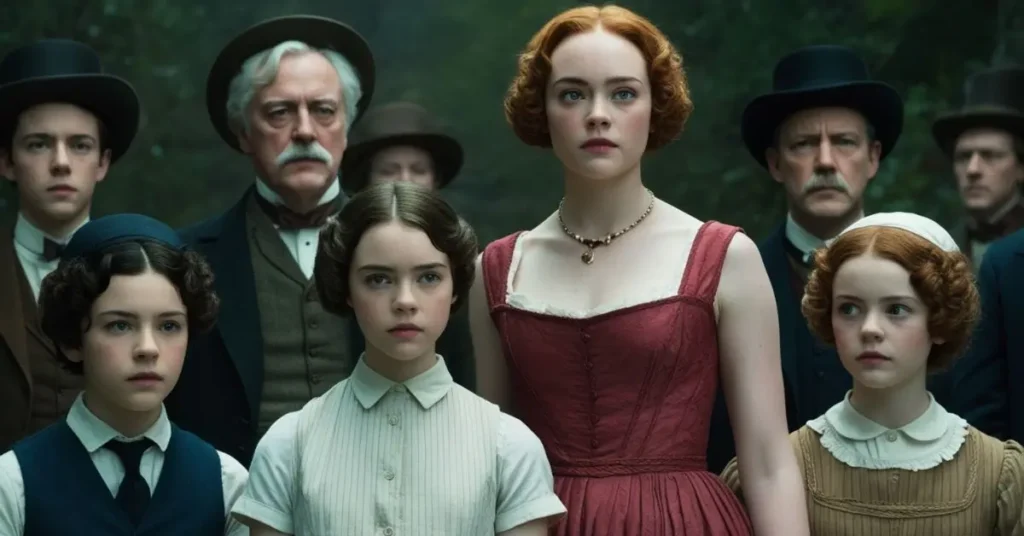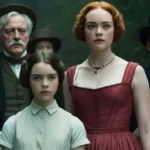“Poor Things” is a captivating film that has garnered attention for its unique storytelling, stunning visuals, and a blend of gothic fantasy elements. Directed by the visionary filmmaker Yorgos Lanthimos, this movie takes viewers on an extraordinary journey through a world that is both familiar and surreal. In this article, we’ll explore the plot, themes, characters, production details, and critical reception of “Poor Things.”
Plot Summary
“Poor Things” is based on the novel of the same name by Alasdair Gray. The story is set in the 19th century and revolves around Bella Baxter, a young woman brought back to life by the eccentric Dr. Godwin Baxter. Bella’s resurrection is unconventional; she has the brain of an infant and the body of a grown woman, making her journey of self-discovery both bizarre and enlightening. As Bella navigates the complexities of her new life, she grapples with themes of identity, autonomy, and desire.
The film follows Bella as she escapes the control of Dr. Baxter and embarks on an adventure with Duncan Wedderburn, a debonair lawyer. Together, they travel across Europe, exploring new cultures and confronting the societal norms of the time. Throughout her journey, Bella challenges the expectations placed upon her, striving to carve out her own path in a world that constantly seeks to define her.
Themes and Motifs
- Resurrection and Rebirth: At its core, “Poor Things” is a story about resurrection, not just of the body, but of the spirit and will. Bella’s journey is symbolic of rebirth, as she learns to understand the world around her and her place within it. This theme resonates throughout the film, highlighting the complexities of human nature and the struggle for self-determination.
- Identity and Autonomy: Bella’s character challenges traditional notions of identity and autonomy. Raised from the dead with the mind of a child, she must navigate a world that tries to mold her into various roles. The film explores her fight for independence, questioning societal expectations and the constraints placed on women in the 19th century.
- Science and Morality: Dr. Baxter’s experiment raises ethical questions about the limits of science and the moral implications of playing God. The film delves into the darker side of scientific experimentation, exploring themes of power, control, and the consequences of pushing beyond natural boundaries.
- Feminism and Liberation: Bella’s story is also one of feminist liberation. She defies the patriarchal structures that seek to control her, asserting her own desires and making her own choices. Her journey is a testament to the resilience and strength of women who refuse to be confined by societal norms.
Cast and Characters
- Emma Stone as Bella Baxter: Emma Stone delivers a stunning performance as Bella, capturing the innocence and curiosity of a woman reborn. Stone’s portrayal of Bella’s transformation from a naive, childlike figure to a self-assured woman is both compelling and deeply moving.
- Willem Dafoe as Dr. Godwin Baxter: Willem Dafoe plays the role of the eccentric and morally ambiguous Dr. Baxter. His character is complex, serving as both Bella’s creator and oppressor. Dafoe’s performance adds a layer of depth to the film, portraying a man torn between his scientific ambitions and the ethical ramifications of his actions.
- Mark Ruffalo as Duncan Wedderburn: Mark Ruffalo brings charm and charisma to the role of Duncan, Bella’s companion on her journey. His character is both an ally and a foil to Bella, representing the allure and danger of unchecked ambition.
Production Details
Directed by Yorgos Lanthimos, known for his distinctive style and unconventional narratives, “Poor Things” is a visual and thematic masterpiece. Lanthimos’s direction brings a unique blend of dark humor, surrealism, and gothic elements to the story, creating a film that is as visually striking as it is thought-provoking.
The screenplay, adapted by Tony McNamara, stays true to the novel’s essence while adding a contemporary flair that resonates with modern audiences. McNamara, known for his sharp wit and satirical approach, infuses the dialogue with a sense of irony and humor that enhances the film’s narrative.
The film’s production design, costume design, and cinematography all contribute to its gothic aesthetic. The 19th-century setting is brought to life with lavish detail, immersing viewers in a world that is both beautiful and unsettling. The use of contrasting colors, dramatic lighting, and intricate set pieces further emphasizes the film’s themes of duality and transformation.
Critical Reception
“Poor Things” has been met with critical acclaim, praised for its bold storytelling, strong performances, and visual artistry. Critics have lauded Emma Stone’s portrayal of Bella as one of her most daring and dynamic roles to date. The film’s exploration of complex themes such as identity, autonomy, and the ethics of scientific experimentation has sparked conversations about its relevance to contemporary issues.
The film has also been noted for its feminist undertones, with many critics highlighting Bella’s journey as a powerful narrative of female empowerment. Lanthimos’s direction, combined with McNamara’s screenplay, has been credited with bringing a fresh perspective to the gothic genre, blending elements of dark fantasy with a modern sensibility.
Despite its many accolades, “Poor Things” has also faced criticism for its unconventional approach and some of its more controversial themes. However, this divisiveness only adds to the film’s impact, prompting viewers to engage with its narrative on a deeper level.
Conclusion
“Poor Things” is a film that defies easy categorization, blending gothic fantasy with a powerful narrative of self-discovery and empowerment. Through its compelling characters, striking visuals, and thought-provoking themes, the movie offers a unique cinematic experience that challenges viewers to reflect on the nature of identity, autonomy, and the ethical boundaries of scientific ambition. Whether celebrated for its bold storytelling or critiqued for its unconventional approach, “Poor Things” is a film that leaves a lasting impression, inviting audiences to step into a world that is both familiar and fantastically strange.
FAQs
- What is “Poor Things” about?
- “Poor Things” is a gothic fantasy film that follows the story of Bella Baxter, a woman brought back to life by Dr. Godwin Baxter. The film explores themes of identity, autonomy, and the moral implications of scientific experimentation as Bella embarks on a journey of self-discovery.
- Who directed “Poor Things”?
- The film is directed by Yorgos Lanthimos, known for his unique and unconventional filmmaking style. Lanthimos brings a blend of dark humor, surrealism, and gothic elements to the film.
- Who stars in “Poor Things”?
- The film stars Emma Stone as Bella Baxter, Willem Dafoe as Dr. Godwin Baxter, and Mark Ruffalo as Duncan Wedderburn. Each actor delivers a compelling performance, contributing to the film’s complex and engaging narrative.
- What are the main themes of “Poor Things”?
- The film explores themes of resurrection, identity, autonomy, the ethics of scientific experimentation, and feminist liberation. Bella’s journey challenges societal norms and questions the limitations placed on women in the 19th century.
- Is “Poor Things” based on a book?
- Yes, the film is based on the novel “Poor Things” by Alasdair Gray. The screenplay, adapted by Tony McNamara, retains the novel’s essence while adding a contemporary twist that resonates with modern audiences.
- How has “Poor Things” been received by critics?
- The film has received critical acclaim for its storytelling, performances, and visual style. It has been praised for its exploration of complex themes and its unique approach to the gothic genre. However, it has also faced some criticism for its unconventional narrative and controversial themes.







